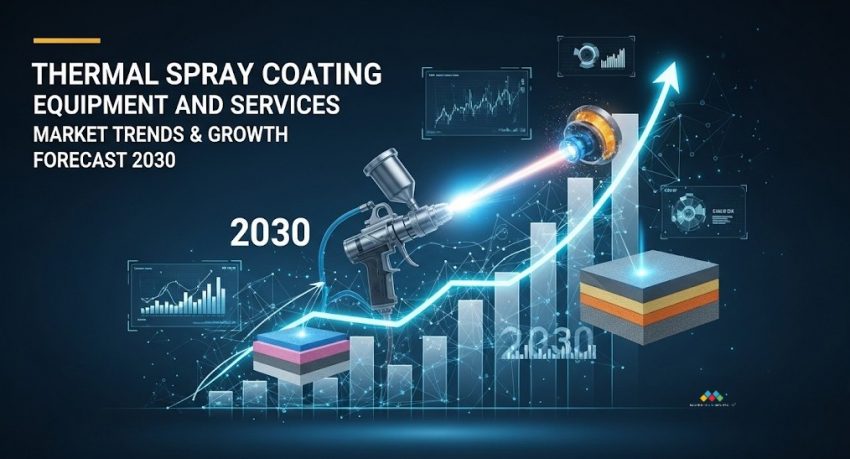The thermal spray coating equipment and services market stands at the cusp of significant growth, driven by strong demand from aerospace, automotive, energy, and medical sectors. From protecting gas turbine blades to enhancing medical implants, these coatings offer critical wear, corrosion, and thermal resistance properties that prolong component life and elevate overall performance.
Why the Market Is Growing
The global thermal spray coating equipment and services market is valued at USD 14.0 billion in 2024 and is projected to reach USD 17.8 billion by 2030, growing at 4.1% cagr from 2024 to 2030. Asia‑Pacific leads the growth trajectory, closely followed by North America and Europe. Demand is fueled by industries seeking durable surface coatings for mission-critical equipment—particularly in aerospace, industrial gas turbines, and automotive
Technology Trends: Plasma, HVOF, Cold & Flame Spray
Among thermal spray techniques, plasma spray accounts for approximately 35–40% of installations due to its versatility across ceramic and metal coatings, strong adhesion, and minimal substrate distortion. High-velocity oxy-fuel (HVOF) is projected to grow fastest, especially in applications demanding extreme wear and corrosion resistance. Flame spray holds a significant share as well, favored for economical coating of metal surfaces in industrial settings. Cold spray is gaining traction too, particularly in repair and restoration of aerospace parts where thermal damage must be avoided
Material Insights: Ceramics, Metals & Intermetallics
Ceramic coatings held a major share, favored for their thermal resistance and application across aerospace, automotive, and medical devices. Metallic (alloy) coatings represent around 40–45%, especially for parts exposed to severe wear, like turbine blades and oil & gas components. Intermetallics and polymer-based coatings are also used in niche applications involving extreme thermal or chemical exposure.
Key Applications Driving Demand
- Aerospace & Defense: Thermal spray coatings protect engine components, turbine blades, and structural parts from high temperatures, corrosion, and erosion. This segment accounts for about 35% of total market share
- Industrial Gas Turbines: With growing distributed power generation, coatings that enhance turbine efficiency and durability are in higher demand
- Automotive & EV: Coatings are widely used in brakes, engine parts, exhaust systems, and electric motor components to improve durability and thermal performance
- Medical & Healthcare: Wear-resistant ceramic coatings support biocompatibility in
Market Growth Drivers & Challenges
Growth Drivers
- Increasing demand for durable, high-performance coatings in aerospace and industrial sectors
- Innovations in HVOF, plasma spray, and cold spray technologies
- Rising investment in energy-efficient and sustainable equipment
- Expansion of aftermarket services for repair and restoration of coated parts
Challenges
- High investment cost for advanced thermal spray equipment and processes
- Dependence on skilled technicians for operation and maintenance
- Strict regulatory environment regarding emission controls and material safety standards
- Competition from alternative coating technologies like PVD and CVD.
Future Opportunities & Trends
The market is shifting toward more automated, smart spray systems integrated with IoT sensors and predictive analytics for real-time quality control and reduced downtime. Hybrid additive-plus-repair spray methods are enabling manufacturers to extend component life without full part replacement—particularly in aerospace and heavy industries. Emerging analysts also highlight rising use of thermal spray coatings in hydrogen turbines, medical implants, and EMI-shielded electronics in EVs.
Unlock the Full Report – PDF Download Available
The Thermal Spray Coating Equipment and Services Market is primed for strong growth over the next decade. With technologies like plasma spray, HVOF, and cold spray, industries are enhancing component life, performance, and energy efficiency. Companies integrating services with smart, data-driven spray systems will lead the market shift toward sustainable, high-value coatings solutions. Whether you’re in aerospace, automotive, turbine manufacturing, or healthcare equipment — investing in thermal spray capability is increasingly strategic for future-readiness.

